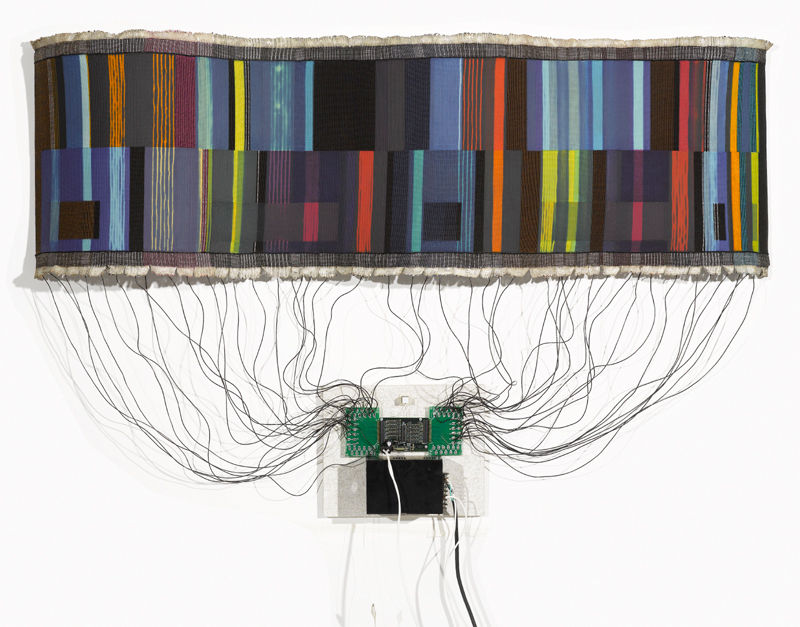Knitting with Code: The Evolution of Textile Intelligence
- Inkroot Studio
- Aug 19
- 4 min read
For centuries, the loom has been more than a tool—it has been one of humanity’s earliest technologies, binding together threads of culture, economy, and identity. It carried stories, encoded symbols, and sustained livelihoods across civilizations. Today, another kind of loom hums in the background: algorithms, microcontrollers, and artificial intelligence. These are not replacing tradition, but reshaping it, creating a dialogue where heritage and innovation entwine. Having observed three decades of intersections between craft and technology, I see textiles once again standing at the cusp of a profound transformation.

From Jacquard to G-Code: The Language of Fabric
The story of digital textiles begins long before the advent of AI. In 1801, Joseph-Marie Jacquard’s punch-card loom not only revolutionized weaving but also prefigured the very logic of computation. Two centuries later, its legacy is echoed in digital coding systems like G-code—a programming language originally designed to control CNC machines and 3D printers. Today, G-code has become a new grammar for knitting, turning stitches into syntax. Likewise, Knitout, a knitting programming language, offers a common tongue, making the digital creation of textiles as open and shareable as writing code for the web. This quiet revolution is not about spectacle, but about equity—ensuring that computational textiles are not confined to elite labs, but are accessible to all makers. Designers are no longer merely weaving with yarn, but “writing” fabric line by line, in code. This shift redefines authorship: the loom becomes an interpreter of algorithms as much as an interpreter of thread.

E-Textiles: Circuits in the Cloth
Once textiles acquired a digital grammar, it was only natural for them to develop circuitry. The emergence of e-textiles, made possible by conductive threads and microcontrollers such as the Lilypad Arduino, transformed fabric into living, responsive matter. A sari that glows with the movement of a dancer’s hand, a jacket that monitors heart rate, or a performance costume that responds to audience applause—these are not speculative fantasies, but tangible realities. Here, textiles blur the line between fashion, medicine, and performance art. They are not only carriers of cultural meaning, but also energy and data, becoming intimate architectures woven directly onto the skin.

AdaCAD and the Algorithmic Loom
If G-code gives fabric a syntax, design tools like AdaCAD extend its poetics. Developed for weaving imagery through algorithms, AdaCAD reclaims the loom as a site of computational creativity. Artists can now encode complex patterns—visual poems, digital abstractions, or even woven data—directly into warp and weft.
As artists and engineers push further, fabric itself begins to evolve beyond its static nature. Experiments in thread-splitting, lattice structures, and shape-changing textiles bring motion and responsiveness into the material. Yarns can now expand, contract, or morph in response to stimuli such as touch, heat, or humidity. Imagine shelters that fold like petals at sunset, or garments that breathe like skin. Fabric becomes architecture, a responsive system rather than a passive surface. The result is a kinetic, living textile that gestures toward futures where design is not fixed, but perpetually adaptive.
Elizabeth Meiklejohn's Lattice Structures and TC2 woven structure using AdaCAD
Bio-Algorithms: Nature as Co-Author
Alongside electronics and code, biology has also entered the loop. The Silk Pavilion project at MIT, where silkworms were guided by algorithmically designed structures, reveals a radical synergy between nature and computation. In such work, cloth is not manufactured but co-authored: the artist, the algorithm, and the living organism collaborate. The loom becomes an ecosystem, where microbes, worms, or plant fibers may one day weave alongside us. This approach reframes textiles not merely as products of human ingenuity, but as sites of co-evolution with the natural world.

Folding Histories into Futures
The turn toward AI in textiles is not without precedent. The last century of electronic art has offered both visionaries and provocateurs—from sensorial installations that immerse audiences in light and sound, to kinetic weaves that defy static form. What is striking today, however, is how AI is not simply a tool in the artist’s hand but a collaborator in the process. Machine learning systems can generate weaving patterns, optimize structures for durability, or even propose aesthetic variations beyond human imagination. In these partnerships, agency is shared—the fabric is as much written by the algorithm as by the artist.

India’s Emergent Voices
Within this global tapestry, India too is beginning to thread its voice into the dialogue. Artists such as Chhail (Anuvad) are experimenting with AI-driven textile translations, using code not just for utility but for metaphor. His works reimagine ancient Indian weaving traditions—ikat, jamdani, and khadi—through algorithmic interpretation. Here, cloth becomes a philosophical inquiry: what happens when a tradition rooted in slowness and tactility is filtered through the logic of machines? The result is neither a rejection of heritage nor blind techno-optimism, but a thoughtful extension. In India’s hands, the loom remains a site of cultural memory even as it converses with AI.

Toward a Textile Future of Infinite Threads
Reflecting on these developments, one truth becomes clear: AI is not erasing textile heritage—it is extending it. The warp remains tradition, the weft is innovation, and the emerging fabric is both digital and handspun, intimate and global.
The loom has always been a metaphor for knowledge, a technology of order and pattern. Today, as threads of electricity, biology, and code are woven together, textiles once again return to the center of cultural imagination. What we are weaving now are not speculative futures but present realities—fabrics that think, respond, and breathe.
For curators, artists, and thinkers, the task ahead is not only to showcase these innovations but to hold space for dialogue between past and future, between heritage and possibility. In that dialogue lies the true beauty of textiles: their infinite capacity to entwine memory with imagination, and to remind us that even in the digital age, every thread still carries a story.
~ Curated by Inkroot Studio












Comments